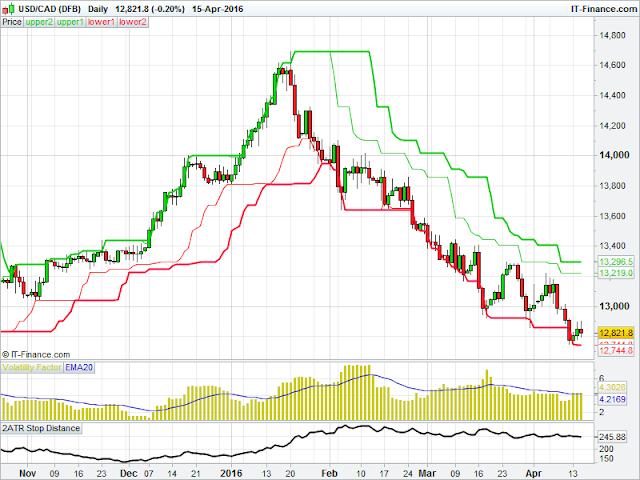Trend following is a reactionary process. Because of this, you will never catch the top or bottom of a price move. It will however, get you on the right side of a directional move. You will never get caught on the wrong side of a major trend.
Well known former 'gurus' of the markets of the past, such as Joe Granville or Robert Pretcher, have ended up so entrenched in their beliefs about what would happen, that after they had their successful period, they gradually lost their following as they were consistently proven wrong. It was as if they could not be seen to be wrong.
In January and early February of this year, there were lots of traders saying the markets had 'topped out', and we were at the start of a new market downtrend - trend followers (such as myself) included!
However, as price action has evolved, what was initially seen to be a minor pullback or retracement against the trend has morphed into the possibility of a new uptrend taking hold. Again, how you determine whether the markets are trending upwards, downwards or going sideways will depend on your own chosen timeframe and parameters.
The chart of the FTSE below shows how price has moved up off the February lows, before consolidating since the beginning of March. This index has been weaker than say, the S&P500, which has been price moving up for a few weeks. In this period, we can see that volatility has contracted, in the manner of the coiling of a spring. This week has seen price now breakout to the upside, with a pattern of higher highs and higher lows starting to form.
Seeing what is currently happening, those traders who have an 'emotional indifference' to being proven wrong will simply say to themselves "Well, fancy that - a new uptrend! I better look to go long".
What they WON'T be doing is re-jigging their previous analysis, switching timeframes. or looking elsewhere for some theory which would give them an emotional crutch that their original prediction or opinion was right. Again, lots of people either can't or won't do that - they don't want to lose face by accepting that their prediction has proven to be wrong.
As for trend followers, we try to avoid making predictions as to what may or may not happen. I'm wrong lots - way more often than I'm right. So if I am wrong on a trade, I don't care - it is simply one of the usual losses. So I'll get the hell out and move on. And if price tells me that, actually, there is now the chance of a trend developing in the opposite direction, then I should look to trade in that direction.
Put simply, I let price tell me what to do and when - I never try to impose what I think could or should happen on the market. When you combine that approach with good risk control, there is no emotional attachment to what happens. This helps you take small losses when price decides to change direction.
This approach gives a trend follower great freedom - he is not tied to an opinion or prediction, and can seemingly switch direction at the drop of a hat. Price is the simplest metric to determine in which direction he should be trading. And if that means he trades both long and short on a stock or instrument in a relatively short period of time, then that is what he will do.
I know some traders that caught the uptrend towards the end of last year in the 'loonie' (USD/CAD forex pair). And, when they got the appropriate signal in February, they took the short signal too. They had the ability to profit from both signals because they had learnt to leave their thoughts or opinions out of their trading, and simply 'went with the flow' of the signals. And they have profited handsomely as a result.
In Michael Covel's book Trend Following, there is a price chart of the British pound which Bill Dunn traded unsuccessfully over a year or so, with entry signals in both directions repeatedly failing. Dunn's own method meant that he was always long or short a particular market, switching direction when his rules told him to. As Dunn said:
"We don't make market predictions. We just ride the bucking bronco."
So, depending on a traders entry and exit parameters, and how they determine whether price is starting to trend in the opposite direction, traders like Dunn will simply follow what price is telling them. And if it means reversing a recently taken position, so be it.



Very good article!
ReplyDeleteThanks Julian!
Delete